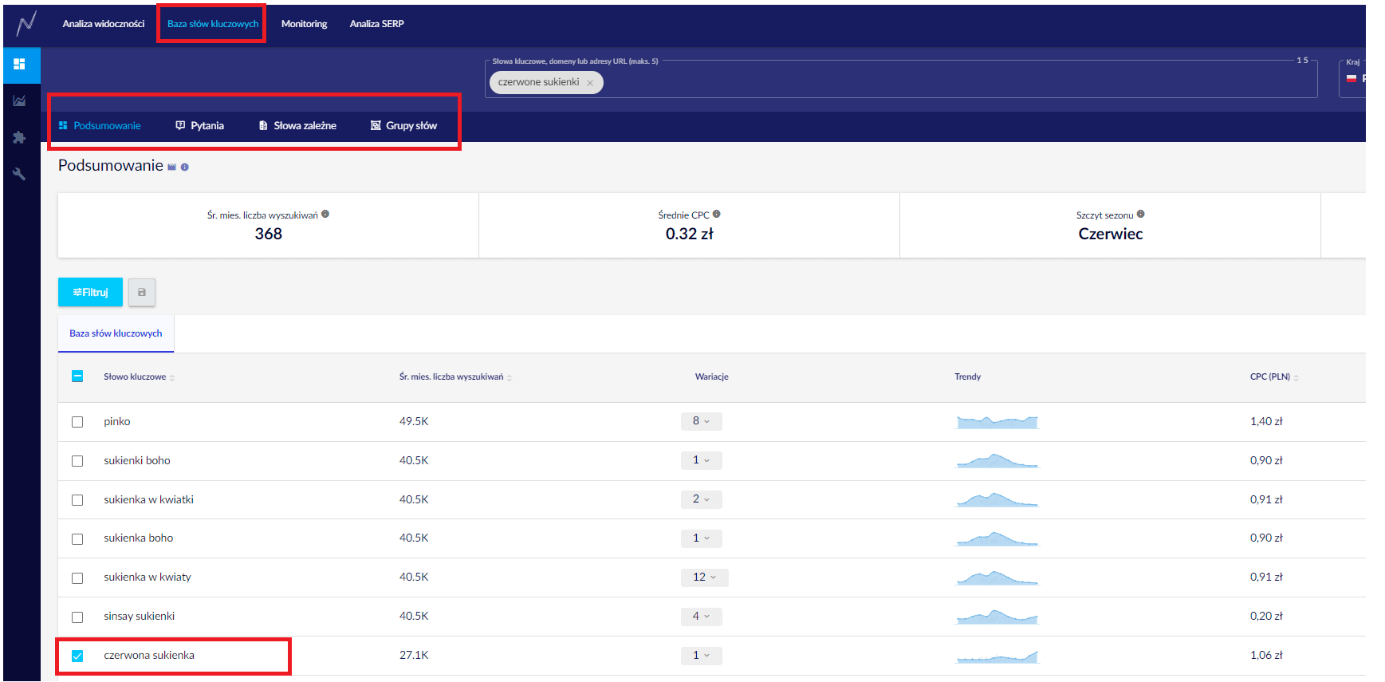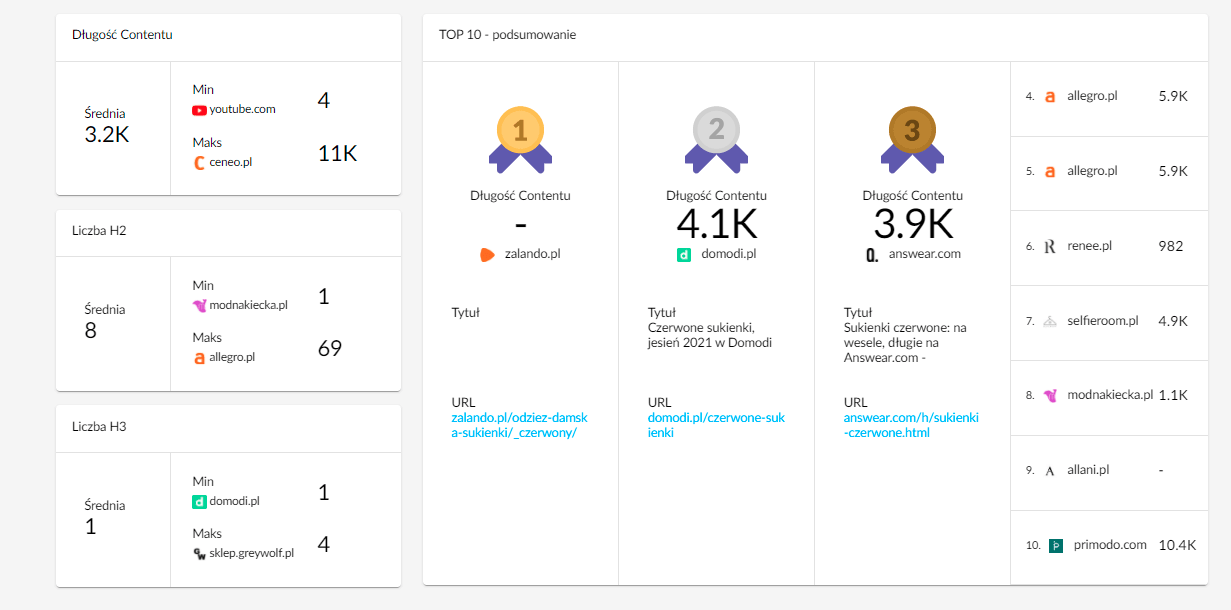The architecture of information consists of the structure of a website, the division of content and the hierarchy of individual pages. It can be considered that in the context of SEO, website architecture is the art of organizing content and resources in such a way that the site is accessible to both the audience and page indexing bots. As a result, all the effort put into organizing the site translates into longer and deeper visits, higher return rates, lower rejection rates and higher rankings in Google. Which is to say: everything that SEO bears like best!
Let’s look at the topic of information architecture from yet another angle: if Google’s mission is to organize information in the search engine, and the algorithms are constantly optimizing search results (taking into account user behavior, among other things), then subscribing to this mission must benefit the site owner.
In a nutshell, it can also be admitted thatthe resource of information on a site that is easily accessible and useful is a ranking factor indirectly affecting positions.
Why indirectly? Because it is not the information architecture itself that is the most important factor. Among other things, search engine positions are influenced by the behavior of users once they enter a site. If the information is organized, and the navigation is intuitive, time spent on the site will increase, sessions will be deeper (the number of clicks between subpages will increase), and satisfied users will return more often – generating direct traffic (direct) or branded queries.
I mean: structured information architecture greatly influences user behavior, which in turn contributes to higher rankings in Google.
Now that you know that proper website architecture is an important ingredient for success on the Internet, we can move on to discuss the most important concepts and guide meat, i.e. describe best practices, recommendations and mistakes often made by SEO tinkerers.
What is information architecture?
.
Information architecture (IA) is a broad term that describes the labeling of data about a product. The product can be a website – organizing the architecture of a website is therefore part of the process of building information architecture.
More simply and analogously: a well-functioning public transportation system consists of logically linked stop layouts (derived from the needs of the traveling public) and schedules with clear navigation. The same with the user’s journey on the site – the viewer should always know where he or she is at any given moment and easily get to the desired information, related services, products and articles. At the same time, it is worth remembering that the architecture of information (and the order associated with it) on different types of sites is based on a slightly different scheme. For example:
- in an e-commerce site – in addition to the homepage, the structure includes sub-pages of product categories and subcategories, product cards (often grouped additionally on the basis of common features or selected filters), most often a blog section is additionally created – also based on categories, linked internally and contextually with products, based on common or independent tag listings;
- on a landing page or onepage – the entire architecture and all functionality (including navigation and content) fit on a single page, divided into blocks – with a call to action incentive;
- In social networks – the heart of the structure is usually the user’s profile and news feed from selected channels;
- on video platforms – the most important thing is media segmentation and content categorization to facilitate browsing through the catalog;
- on a specialized knowledge site – the architecture looks similar to the blog sections of online stores, but with an even greater emphasis on the journey from content positioned for generic and general phrases – to related content positioned for long-tail phrases exploring the topic (that like what phrases? Learn more about the long tail)
.
.
.
.
.
Conclusions: always tailor the information architecture and website design to a specific purpose. Don’t start working on a website or the next part of it without dissecting such elements as:
- the purpose of the site and user scenarios;
- the site navigation (including, but not limited to, menus, search engine, crumb navigation – breadcrumbs);
- site structure, site map (and subpage hierarchy);
- types of pages (and links between them);
- internal linking;
- strategy for creating tags/categories;
.
.
.
.
.
.
As you can see – the competency of marketers here is closely related to SEO expertise and the strategy of building content. Without the cooperation of all these departments, not a move!
Why is website information architecture important?
.
Understanding the basics of information architecture will make a lot of questions arise at the conceptual stage of project work. Who is the communication directed to? Who is the recipient of the service? With what intention does the recipient come to us? Who is he or she and what should he or she find on the site? What content and products should be highlighted? How to link the pages together to naturally complement the navigation with menus?
The answers to these and other questions (derived not only from marketing and SEO knowledge, but also from behavioral knowledge) will ultimately contribute to directing the user’s attention to places that fulfill business goals.
So in the context of SEO, it’s not just about throwing in links in the content or product blocks thematically related to the article. Website architecture for SEO is more than that – it’s about the entire experience of the website viewer, because user paths leading to business goals are most often multi-step and require many separate decisions.
It’s easy to conclude here that a good information architect will always match means to an end, and only later test individual solutions and optimize paths on the website.
5 reasons to ensure proper site architecture for SEO
.
- You will encourage the user to perform the expected actions – fulfilling your primary marketing goals while meeting the site’s SEO goals.
- You will ensure clear navigation – without multiple and pointless repetition of links on a single page, but with the most important hyperlinks in strategic places: in the main and side menus, in the footer, in the navigation breadcrumbs.
- You’ll get your site’s internal linking right – and you’ll further strengthen topical authority (content will be thematically related), reduce bounce rate and avoid low dwell time.
- You will make it easier for search engine robots to index subpages – that is, at the same time you will positively influence the final effect of positioning and avoid situations in which several clicks are necessary to enter some subpages (heavily “buried” pages, so-called “orphan pages”, are less frequently visited and less well indexed).
- Avoid cannibalization on the site – a good information architecture is one in which there is no cannibalization, that is, individual pages do not compete with each other for positions on the same phrases. Check the Senuto tool to see if cannibalization is occurring on your site (enter your site’s address in the “domain” window, go to the “Visibility Analysis” tab, followed by “Cannibalization”)
.
.
.
How to plan a site architecture for SEO?
.
Step 1 Identify the main goal of the site
.
Site design, UX, SEO and content – all of these elements should stem from the site’s business goals, complement each other and be consistent with each other.
Step 2 Create a list of user intent
.
Know the intentions of your audience/customers and create a list of them at the concept stage. Google is becoming more and more attentive to the concept of search intent (user intent), matching search results as closely as possible to a given intent. Think along the same lines – create content and implement a SEO strategy in such a way as to meet the specific intent of your audience and appear with your service/product at the perfect time.
Step 3 Prepare a list of categories and subcategories
.
The exercise of listing all the categories and subcategories on the site significantly improves the SEO work of the site. In the course of work, it may turn out that some categories are not worth creating (too small an offer to fill them), and some categories turn out to be more important than others (and therefore also require “better treatment” – such as creating a more elaborate SEO description).
For each subcategory and category, you should do research phrases, and by the way, check (in addition to monthly query volume) how the competitiveness of the phrases looks like. You can find all this information in Senuto (use the “Keyword Database” module, and in addition, analyze each category name in the “SERP Analysis” module, through which you can check, among other things, the length and construction of the content of your competitors in the TOP search results).
Step 4 Ensure consistent sub-page design
.
In longer articles, include a table of contents, so the user won’t have to scroll endlessly down the page to the desired chapter.
Take care of convenient navigation on the product card, don’t dump the user from the product card to the knowledge content, but the other way around – once they have learned more about the problem/need, direct them to the solution/service/product.
It’s also imperative to take care of on-page image SEO – this is an often overlooked element of information architecture that is an important SEO ranking factor (more in the article: 10 steps to on-page photo SEO optimization).
Step 5: Do good phrase research
.
Get to know your audience as well as possible – check not only what they are looking for, but also what language they use (the tone of voice in brand communications must match the language of the audience) and how they formulate questions. To do this, do a good research of phrases – don’t limit yourself to knowing the average number of searches, in the Senuto tool go deeper into the key phrases (you will learn their value per equivalent in the Google Ads system, semantic links, suggested questions related to the phrase, seasonality – etc.).
Page structure vs SEO – key elements
.
Home page
.
- In building your site architecture for SEO on the homepage, include keywords related to your company name, business, industry and type of service (e.g., plumbing store, reliable plumber, online pharmacy, pet store);
- build the page from general to specific – clearly describe what your business is or what products/services are key to the business; also create a page title based on this, e.g. “Online pharmacy – brand name” or “drugs, cosmetics, supplements – brand name”;
.
.
Tags
.
- instead of creating dozens of poorly-filled tag pages – intentionally create specific categories (their names should result from phrase research for the business in question); if you have a very large number of tag pages on the site into which single articles are plugged – think about excluding such pages from indexing;
- answer: tags can be used to manage the information architecture on the CMS side, for example, based on several tags you can create a category page in the CMS – tags in such a situation are not a visible element on the front of the page and do not create separate address URLs, they only help to manage the structure of the page on the CMS side (e.g., in the CMS on the basis of three tags “red dresses”, “green dresses”, “pink dresses” you can with one click create a category “dresses for summer”, in which all the above mentioned dresses with assigned color tags will be pulled up.
.
.
Product categories
.
- always position product, service or article categories on a single topic, do not duplicate the same topics within product categories and guide categories (example: create a product category “dresses for weddings”, dress names: “flared dress with foam,” “pencil dress with flowers,” “formal dress with bows,” etc., related articles: “How to choose a dress for a wedding?”, “How to choose the right size of a dress?”; related articles do not aggregate in a category like “dresses for weddings – tutorials” – such construction involves a high risk of duplication); by the way, learn how to write effective category descriptions.
.
Blog post
.
- The principles of blog information architecture design are the same as for product categories – each topic (and therefore: set of phrases) should be developed on a separate page, each blog post should be linked internally, each blog post sub-page should have unique content (read more about content duplication);
- Additionally, take care of a friendly url, page title, headings (H1 = title, mid-headings – h2, smaller mid-headings = h3), image optimization and main phrases in headings + lead (introduction to the article, which can also be the meta description of the sub-page);
.
.
Description of content
.
- Item especially important for long posts – create the table of contents based on the principle of anchors, i.e. internal links that will allow you to quickly jump to a given paragraph
.
Related entries
.
- It is good to use a hybrid semi-automatic mechanism, i.e. a block of related entries in a given article is automatically filled in (e.g. according to the key: the latest entries with a given tag), and in addition there is an option to manually link specific articles (static links, permanently plugged into the given text)
.
Good practices
.
- Create a flowchart. As you work on the architecture of your website, it’s a good idea to create a simple flowchart – leading from the home page to the various categories and subcategories. Useful tools for creating flowcharts: Draw.io; Textografo, Wireflow, Gliffy.
- Remember that less is more – in an era of banner blindness, a simple and logical structure, clean design and intuitive navigation – no pop-ups at the start and thousands of poorly filled subcategories
- Take care of such details as link structure – in case of multi-component architecture it is worth considering shortening url addresses, for example: all tutorials can be placed in category name-service/articles/title-article – without extending the path by categories and subcategories (erroneously: name-service/articles/category-article/subcategory-article/number-tag/title-article/)
- In e-commerce, the so-called product versioning works well – on one product card you can put several variants of a given product (e.g., a laptop with 4 GB, 6 GB and 8 GB of RAM), making the structure of the site much simpler (an alternative is to insert canonical links on the selected one product, but the problem may arise if it is not available – then the user may have trouble going to other variants of the product).
.
work to your advantage.
.
.
Frequent mistakes when creating information architecture
.
10 common mistakes when working on information architecture on a website:
- Dividing SEO, UX, marketing teams – lack of cooperation and one vision
- Creating a large number of blank tag pages
- Lack of tagging and categorization strategy
- Cannibalization of pages (positioning of multiple pages for the same groups of phrases)
- Incorrect navigation, burying some subpages (orphan pages)
- Posting internal links to tutorials by force (no logical binding of content)
- Weaknesses in the site (e.g., not very intuitive checkout)
- Wrong choice of phrases, positioning for so-called generics (generic phrases)
- Creating subpages that no one is looking for
- Thin content (poor pages, no content)
.
.
.
.
.
.
.
.
.
.
Choosing keywords when creating site architecture
.
Where to get keyword information to consider when creating a site architecture? To do this, use a tool like Google’s keyword planner or Senuto.
1 In Senuto, go to the “Keyword Database” tab. – enter the phrase of your choice and research its potential

2. then expand the details of the phrase, in the details panel you will learn more about the value of the phrase, seasonality, competition, related questions and semantically related phrases:

3. in addition, use Competitor Analysis (module in Senuto additional tools):

4. … and SERP Analysis of the selected phrase:

5. once you have created the correct information architecture in terms of SEO – you can set up projects in Senuto, through which you will track visibility on the desired phrases (report “Monitoring”).
 Jacek Krajl
Jacek Krajl